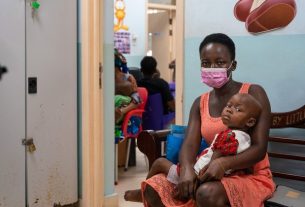Magen David Adom (MDA) rushed a six-month-old baby to the Rambam Health Care Campus in serious condition after he had been forgotten in a vehicle in Haifa.
A little after 1:00 p.m. MDA recieved a report of a baby who had been in a closed car for a long time on Kedoshei Hashoah Street in Haifa. MDA medics and paramedics gave him medical treatment and evacuated him to the Hospital in serious condition.
MDA paramedic Yara Kazan and MDA emergency medicine medic Ron Cohen said: “When we arrived at the scene, we saw the baby unconscious with signs of heatstroke. He was very hot to the touch. We gave him life-saving medical treatment that included cooling and administering medication and evacuated him in a mobile intensive care of MDA to the hospital when his condition is serious.”
MDA paramedic Yara Kazan and MDA emergency medicine medic Ron Cohen said: “When we arrived at the scene, we saw the baby unconscious with signs of heatstroke. He was very hot. We gave him life-saving medical treatment that included cooling and administering medication and evacuated him in an MDA mobile intensive care to the hospital in serious condition.”
MDA reminded drivers transporting children, especially during vacation days and on hot days, to do as much as possible to scan the vehicle at the end of the trip and to prevent the occurrence of forgetting children in the vehicle.
Each year, dozens of incidents involving babies left in cars occur. The temperature inside a sealed car can rise rapidly after just five minutes in the sun. An outside temperature of 30 degrees Celsius (86 degrees Fahrenheit) can result in an interior car temperature of 50 degrees Celsius (122 degrees Fahrenheit) or more, enough to cause severe harm to a child. In the initial minutes of such intense heat and suffocation, a baby will experience shortness of breath and rapid breathing, leading to diaphragm and respiratory muscle fatigue, which can then cause slowed breathing.
Inside the closed car, the extreme heat will cause significant sweating, leading to a loss of essential salts and fluids, and a drop in blood pressure, which will reduce the oxygen supply to vital organs, especially the brain. This results in a loss of consciousness, seizures, heart rhythm disturbances, and severe brain damage. The dehydration process also causes irreversible kidney damage, sometimes requiring dialysis or a kidney transplant.
The high temperature inside the car, with the sun’s rays penetrating through the windshield while the baby is strapped into a seat, can cause burns on the baby’s skin within about 30 minutes. At this point, the baby’s consciousness will be blurred, and his heart rate will increase, but his body cannot meet the oxygen demands. The intense pain from the heat and burns adds to the baby’s distress. The appearance of burns also causes further fluid loss, additional blood pressure drops, electrolyte imbalances, and infection risks.
The extreme heat also directly impairs brain function. Within 45 minutes, significant dilation of blood vessels in the brain may occur, leading to ruptures and severe bleeding. Electrolyte imbalances can cause seizures, further reducing oxygen delivery to the brain.
Severe body system disruptions also damage the kidneys, one of the most sensitive organs. The intense heat, salt loss, and blood volume reduction lead to kidney failure. Kidney cells, some of the most sensitive in our body, will never recover, and once damaged, they undergo a process of final destruction.
The decrease in blood volume, fluid loss, extreme heat, and protein function disruption also cause blood clots that block arteries in the body, leading to a systemic process of organ failure. When the baby loses 15% of body fluids, it typically results in death.
What to Do if You Find a Baby Locked in a Car
- Call 101 and summon MDA. The faster the Magen David Adom team arrives, the greater the baby’s chances of survival.
- Try to open the car. Call for passersby to break the car window to allow temperature reduction and ventilation.
- Provide shade. If you manage to get the baby out of the car, place them in a shaded and safe spot and remove their clothes. If you cannot break the car window, try to cover the car to lower the temperature slightly.
- If the baby is rescued, move them to a shaded area and wait for MDA evacuation. If the baby is unconscious, begin CPR, including chest compressions.
- Do not give an unconscious baby anything to drink or pour liquids on them.


